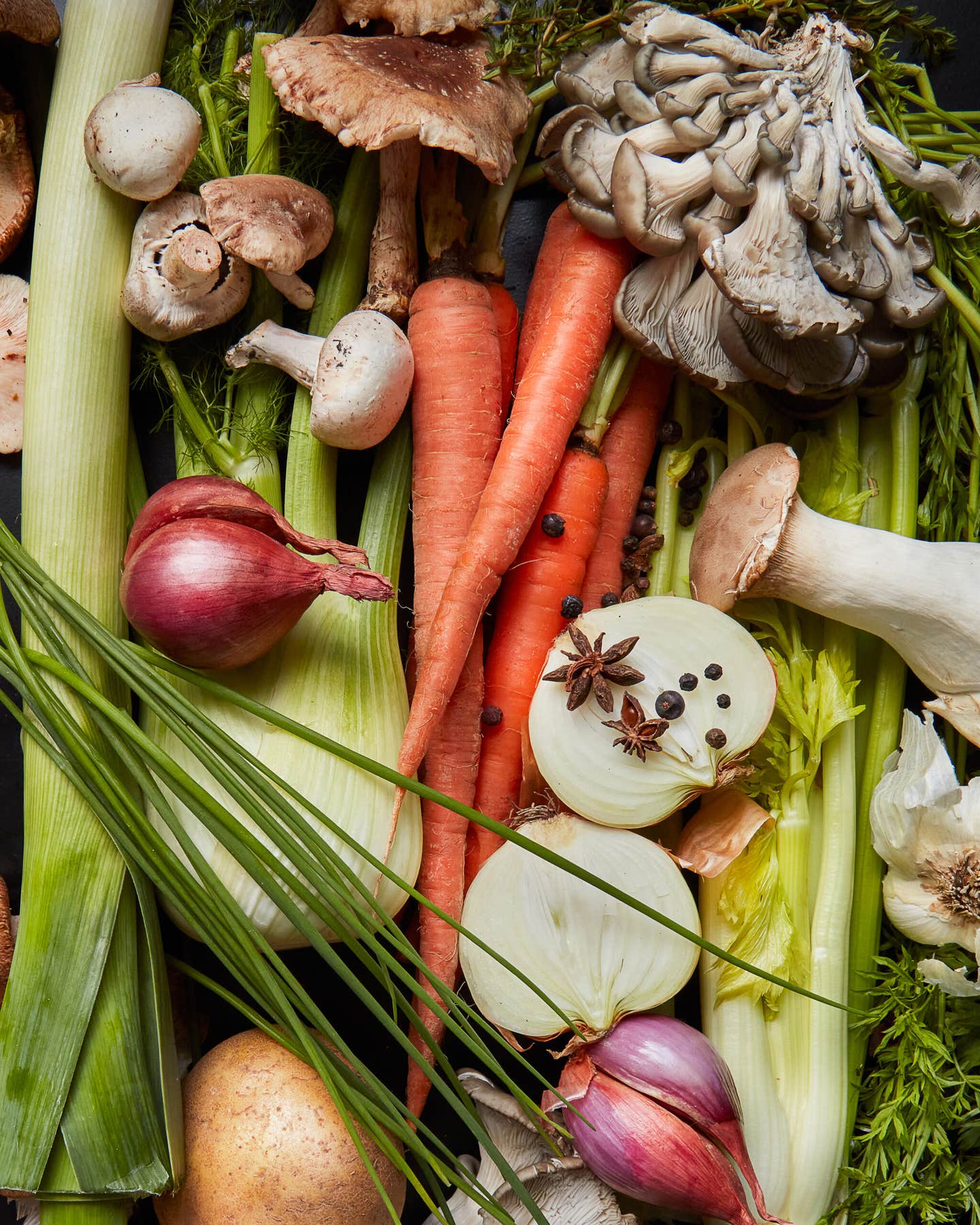How to Make Rich, Flavorful Vegetable Stock
Meat is not required for an earthy, umami-filled foundation for soups and sauces.

Though chicken or beef broth is often the chosen base for soups and sauces, it’s time to ditch the impulse to compare a well-made vegetable stock to its meat-based brethren. A proper version relies on the inherent flavor and diversity of produce scraps to create a complex liquid that works as a building block to any broth or sauce. When former vegetarian Lauren Garaventa trained as a butcher and opened her own shop and restaurant, The Ruby Brink, on Washington's Vashon Island, she chose to use vegetable stock for its earthy singularity. Here she shares her tips on how to make a vegetable stock that you just can't quit.
What you need
- Assorted vegetables: enough to fill ⅓ of your stock pot, including one potato, some alliums, and plenty of mushroom stems and scraps.
- Herbs and aromatics such as parsley stems, peppercorns, and bay leaves
- 20-quart stainless steel stock pot
- Fine mesh strainer
STEP 1: Fill the stockpot with vegetables, herbs, and aromatics.
The most important part of making a good vegetable stock is using a diverse selection of ingredients, Garaventa explains. She collects the scraps from various other dishes and throws them all into the stock pot, aiming to fill it about one-third of the way up before adding water. Along with traditional stock vegetables, like celery, she makes sure to add plenty of mushrooms—especially leftover stems—and a good selection of alliums like onions, leeks, scallions, and shallots. The one non-scrap—and somewhat non-traditional—vegetable she always includes is a potato, which she calls a key ingredient for how it transforms the consistency of the stock. "It mellows it out and makes it taste so good."
STEP 2: Add water, bring to a boil, then simmer.
Fill the rest of the pot with cold water—essential to extract the most flavor and produce a clear stock, according to Garaventa. Then bring it to a boil over high heat. When it starts to boil, turn the heat down to simmer, then Garaventa leaves it for four to five hours—longer than most vegetable stock recipes call for, but the amount of time she feels it takes to get the flavor where she wants it. While meat-based stocks require much longer simmers, the fresh flavors will degrade after a point, and vegetables will break down and make a cloudy stock.
STEP 3: Let the stock settle and strain.
After four to five hours of simmering, turn the heat off under the pot and let the contents settle. Once most of the flotsam sinks, strain the liquid through a fine mesh strainer. Discard the remaining vegetable matter, and let the liquid cool completely before storage. The stock will keep a few days in the fridge, or up to many months in the freezer—even then, it doesn't go bad after time, as much as the flavor fades and degrades.
Final Thoughts
Thinking of vegetable stock as only an alternative to meat-based stocks does it a grand disservice. Vegetable stock that fully employs the complexity and depth of mushrooms, onions, and herbs gives all cooks a versatile, useful addition to their arsenal that’s vegetarian-friendly and wildly cost-effective. Stir it into mushroom dishes, use it to simmer squash, or build it into layers of grain dishes. Made properly, vegetable stock brings more flavor to any dish, especially ones that benefit from a little extra earthiness.
Keep Reading
Continue to Next Story










